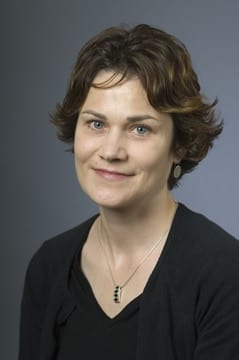
William Maurice "Doc" Ewing was an American geophysicist and oceanographer.

J. Lamar Worzel was an American geophysicist known for his important contributions to underwater acoustics, underwater photography, and gravity measurements at sea.
The Texas A&M University College of Geosciences was an academic college of Texas A&M University in College Station, Texas. The college had six academic departments and programs, including Atmospheric Sciences, Geography, Geology & Geophysics, Oceanography, Environmental Programs in Geosciences, and the Water Management & Hydrological Science (WMHS) Program. In addition, the College hosted three Research Centers and Institutes: Geochemical & Environmental Research Group (GERG), Integrated Ocean Drilling Program (IODP), and Texas Sea Grant College Program.

The Index to Marine & Lacustrine Geological Samples is a collaboration between multiple institutions and agencies that operate geological sample repositories. The purpose of the database is to help researchers locate sea floor and lakebed cores, grabs, dredges, and drill samples in their collections.
Graham Michael "Mike" Purdy is a British geophysicist and oceanographer who specializes in marine seismology. He retired as the Executive Vice President for Research at Columbia University on 1 January 2020. Previously, he was the Director of Columbia's Lamont–Doherty Earth Observatory (LDEO). Currently he is a Professor Emeritus of Earth and Environmental Sciences.
Dallas Abbott is a research scientist at the Lamont–Doherty Earth Observatory of Columbia University and is part of the Holocene Impact Working Group. The primary focus of her present research is on submarine impact craters and their contribution to climate change and megatsunamis. She also has presented research regarding a large impact crater in the Gulf of Maine.

Robert D. Conrad (T-AGOR-3) was a Robert D. Conrad-class oceanographic research ship that operated from 1962 to 1989. The ship, while Navy owned, was operated as the R/V Robert D. Conrad by the Lamont–Doherty Earth Observatory of Columbia University from delivery to inactivation. The ship provided valuable ocean-bottom, particularly seismic profile, information and underwater test data to the U.S. Navy and other U.S. agencies.

John "Jack" Ertle Oliver was an American scientist. Oliver, who earned his PhD at Columbia University in 1953, studied earthquakes and ultimately provided seismic evidence supporting plate tectonics. In the 1960s, Oliver and his former graduate student, Bryan Isacks, set up seismographic stations in the South Pacific to record earthquake activity, and the data collected led to the insight that part of the ocean floor was being pushed downward.

Terry Ann Plank is an American geochemist, volcanologist and professor of earth science at Columbia College, Columbia University, and the Lamont Doherty Earth Observatory. She is a 2012 MacArthur Fellow and member of the National Academy of Sciences. Her most prominent work involves the crystal chemistry of lava minerals in order to determine magma ages and movement, giving clues to how quickly magma can surface as lava in volcanoes. Most notably, Plank is known for her work establishing a stronger link between the subduction of ocean sediments and volcanism at ocean arcs. Her current work can be seen at her website.
Plank states that her interest in volcanoes began when her Dartmouth professor took her and other students to Arenal volcano in Costa Rica. He had them sit and have lunch while on top of a slow-moving lava flow and while watching bright red goops of lava crack out from their black casings. "It was totally cool, how could you not like that?" Plank recalled the event to State of the Planet, an Earth Institute News source at Columbia University.

Anthony Brian Watts FRS is a British marine geologist and geophysicist and Professor of Marine Geology and Geophysics in the Department of Earth Sciences, at the University of Oxford.

Katrina Jane Edwards was a pioneering geomicrobiologist known for her studies of organisms living below the ocean floor, specifically exploring the interactions between the microbes and their geological surroundings, and how global processes were influenced by these interactions. She spearheaded the Center for Dark Energy Biosphere Investigation (C-DEBI) project at the University of Southern California, which is ongoing. Edwards also helped organize the deep biosphere research community by heading the Fe-Oxidizing Microbial Observatory Project on Loihi Seamount, and serving on several program steering committees involving ocean drilling. Edwards taught at the Woods Hole Oceanographic Institution (WHOI) and later became a professor at the University of Southern California.[1][2]
Tina van de Flierdt is a Professor of Isotope Geochemistry at Imperial College London.
Charles Lum Drake was an American geologist who was Professor of Geology at Dartmouth College, New Hampshire.
Kirsteen Jane Tinto is a glaciologist known for her research on the behavior and subglacial geology of the Greenland and Antarctic ice sheets.
Karen Fischer is an American seismologist known for her research on the structure of Earth's mantle, its lithosphere, and how subduction zones change over geologic history.
Suzanne Carbotte is a marine geophysicist known for her research on the formation of new oceanic crust.
Anne Sheehan is a geologist known for her research using seismometer data to examine changes in the Earth's crust and mantle.
Sidney Hemming is an analytical geochemist known for her work documenting Earth's history through analysis of sediments and sedimentary rocks. She is a professor of earth and environmental sciences at Columbia University.
Kim Anne Kastens is an American geophysicist who is a professor at the Lamont–Doherty Earth Observatory. She was awarded the American Geophysical Union Excellence in Earth and Space Science Education Award in 2009 and elected Fellow in 2021.
Maya Tolstoy is a marine geophysicist known for her work on earthquakes in the deep sea. From Fall 2018 through December 2019 she was the Interim Executive Vice President and Dean of the Faculty of Arts and Sciences at Columbia University. As of 2022, she is the Maggie Walker Dean in the College of the Environment at the University of Washington.







